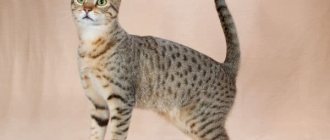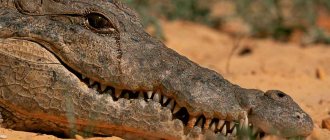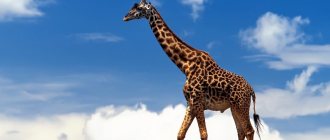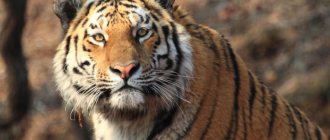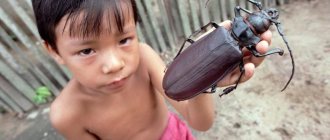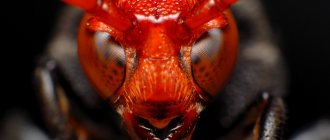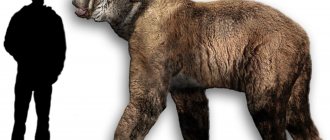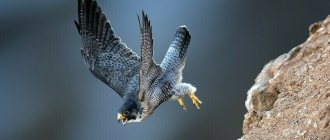Among the reptiles, descendants of dinosaurs, there are completely harmless species, and there are also those whose meeting poses considerable danger - their poison can kill large animals and humans. Nature gave them the opportunity to preserve their species in this way, so we can observe the animal world in all its diversity. Lizards are no exception, numbering more than 6,300 species. The most dangerous of them do not make up the majority, but they represent a fairly large group of animals.
Gilatier (Arizona snaketooth)
Reptiles from the Venomtooth family are considered the most poisonous lizards in the world, and they are represented by the Arizona Venomtooth (vest) and the Mexican Venomtooth (escorpion).
The habitat of the Arizona horned tooth is the southwestern United States, the northern regions of western Mexico. You can find lizards in thickets of cacti, among tall grass and bushes, in deep canyons, and on mountain slopes. The reptile is an excellent swimmer, so it sometimes settles near a body of water.
The size of the poisonous tooth is quite large - the body length is about 60 cm, a third of the length is occupied by the tail. The weight of the individual is from 1 to 2 kg. The outer side of the limbs, sides and back are covered with bone plates. The flattened, rounded head is slightly lowered down. The tip of the long tongue, which is the organ of smell, is forked. The eyes are small, equipped with a movable eyelid. The paws are short, have five toes each, equipped with sharp, strong claws.
The coloring distinguishes the species - the scaly dark brown skin has bright reddish-yellow, yellowish-orange, brownish spots, the tail is cut with transverse dark stripes. Aggressive coloring repels predators and performs a protective function.
Also, for protection, a strong poison is produced in the modified salivary glands located in the lower jaw. From the glands, along the mucous fold that is located between the lip and jaw, it flows to the base of the teeth. They are curved back and have special grooves along which the poison rises. The row of upper teeth is wetted with toxin after the jaws are closed.
In the treatment of type II diabetes, they use "Exenatide", made from the saliva of the serpentine tooth, containing the hormone exendin-4. Studies have been conducted showing that the hormone can reduce appetite.
Nutrition, lifestyle
The diet of a poisonous lizard includes birds, insects, lizards, small mammals, eggs of reptiles and land turtles. The supply of nutrients is deposited in the tail, from where it is consumed in case of power outages. Their metabolism is slow, so the serpentine tooth feeds only a few times a year - from five to ten times. The weight of food taken is approximately one third of body weight.
He rarely uses poison as a means of hunting. Mainly uses it for protection. Small animals die from a bite, but humans are able to cope with the effects of toxins. But sometimes the strongest poison leads to death, since the central nervous system is affected, so you should be careful when dealing with a dangerous lizard.
Reproduction
Venom teeth sleep in winter and emerge from this state at the end of January or February. May-June is the breeding season, when the male is actively searching for a female. Having found a suitable candidate, he climbs on top of the female, calming her by rubbing his muzzle on her back, and tightly clasps her with his hind limbs. In the case when the “lady” does not need a partner, she tries to free herself and bites him; if she is ready to mate, she raises her tail.
Males have two penises, but only one is used for sexual intercourse. The duration of mating varies - from a quarter of an hour to 2.5 hours.
After mating, about a month later, the female begins to prepare a hole (its depth is from 10 to 12 cm). There are from 2 to 12 eggs in a clutch. The length of the incubation period depends on weather conditions, the average duration is about nine months. The hatched cubs (their length is 12-16 cm) are immediately able to use poison.
In the wild, Amazonian vultures live for about 20 years; in an artificial environment they can live for 30 years. As a result of land development and reduction of habitat areas, the species is considered vulnerable and is listed in the Red Book.
Lizards in an apartment
It has become fashionable to breed exotic animals and keep them in apartments. Lizards are no exception, but not all species are suitable for keeping a home. They need to create certain conditions and become familiar with their way of life in their natural habitat.
Types of lizards to keep in an apartment:
- geckos - sizes 1.5-35 cm, flattened body, thick tail, short paws, can move along smooth steep surfaces, live 15-20 years;
- iguanas - body length in young individuals is 20-25 cm, in adults - 60-70 cm, the body is narrow, elongated, the tail is long, the head is large, there is a large pouch under the throat, they live 20 years;
- agamas - a flat and thick body grows a little more than 50 cm, a triangular head, they live 10 years;
- chameleon - body size depending on the variety is 3.5-70 cm, long tail that can curl into a spiral, long limbs with claws, able to change skin color, lives about 4 years;
- currents - grows up to 40cm, is capable of making loud sounds, lives 12-14 years.
Source
Escorpion (Mexican serpentine)
If we compare the Mexican lizard with the Amazonian one, its size is much larger - the body grows up to 0.9 m, and the weight of large individuals reaches 4.5 kg. The tail is long, powerful, and occupies almost half of the body. They also differ in color - the escorpion is darker, yellowish stripes and spots do not form a distinct pattern. Among them there are individuals with a black or grayish-brown body color without spots. The structure of the jaw and teeth are similar.
The species of poisonous lizards lives in California on the shores of the bay, in the south of western Mexico, in Guatemala. It prefers to settle in dry, rocky areas, in grass and bushes of open forest, among stones and rocks at the bottom of canyons.
During the day they are passive and spend time in burrows they have dug or occupy empty ones. They may not crawl out into the light for several days. With the onset of darkness, the poisonous teeth leave the shelter, but they move very slowly and awkwardly, so it is difficult for them to catch up and run away.
The lifestyle, nutrition and reproduction of the Amazonian and Mexican lizards are similar. They have few enemies in nature - they should be wary of coyotes and birds of prey.
Lizards in the tropics
The zones of tropical forests and temperate forests are inhabited by species of lizards that differ significantly from each other. The habitat leaves an imprint on the appearance and behavior of forest lizards. Among them, the most interesting is a unique representative of the agamidae family - the flying dragon, which lives in tropical forests.
Flying dragon lizard
“Dragon” in relation to this species is said quite loudly - the word “little dragon” would be more suitable. Most likely, the lizard received this name because of its external resemblance to a flying animal - in flight it really resembles a flying dragon.
Flying lizards live in the treetops of tropical forests in Southeast Asia and practically never descend to the ground. Descent is necessary only for laying eggs, and if the flight does not go well.
Small (up to 40 cm) lizards fly (glide) from tree to tree using folds of skin spread like wings. The body is also adapted for gliding - narrow and long, the tail, like a steering wheel, helps to change direction, there is a growth on the throat that balances the position of the body.
On a note! The flight length is 20-60m, the direction is different - vertically, horizontally.
When the “wings” are folded, it is difficult to see the dragon - the color merges with the foliage and branches, and when they are spread out, they appear to be a flower due to their bright color.
Dragons feed on ants, insects and their larvae. Lifespan is about 5 years.
Komodo dragon (giant Indonesian monitor lizard, Komodo dragon)
Komodo dragons from the Varan family are considered to be the largest and most dangerous lizards in the world - some representatives of the species grow up to three meters or more, and weigh from 100 to 130 kg. The average body length is from 2.25 to 2.6 m, weight is from 35 to 60 kg. The size of males is significantly larger than that of females.
They are distinguished not only by their size, but also by their color - the orange-red or yellowish spots on the body of a young monitor lizard become darker with age, acquiring a brown color. Small yellowish spots and specks are scattered throughout the lumpy body.
This species of monitor lizard is one of the most ancient. The remains of animals that lived 3.8 million years ago have been found. Nowadays it lives on the Indonesian islands, where there are about 6,000 individuals.
Nutrition, environment, lifestyle
You can meet dangerous giant lizards on dry plains heated by the sun, in savannah areas, and in dry tropical forests. In the heat of the day, they prefer to hide, appearing in the early morning and evening, when the heat begins to subside. Burrows up to 5 m long are dug with paws equipped with strong curved claws.
Until the monitor lizard grows up, it is able to easily climb trees, where it spends most of its time in search of food or hiding from danger. His enemy is an adult monitor lizard, which will not refuse to eat a small relative, a bird of prey, a snake.
When the cub grows up, it is more difficult for him to climb a tree, so if he needs to get food from the tree, he rises on his hind legs and rests his tail on the ground, jumping. Acute vision, olfactory organs located on the tongue, and excellent hearing help sense prey. The predator can detect the smell of carrion and the blood of a wounded animal at a distance of more than 10 km. The giant does not have a vocal apparatus, so the sounds it makes are similar to hissing, hissing, and growling.
While the monitor lizard is small in size, it feeds on insects, small invertebrates, fish, turtles, snakes, and rodents. In adulthood, it switches to large animals, which are sometimes several times larger than it.
Opening its mouth wide, the predator uses its sharp teeth to grab part of the victim’s flesh, tear it out and swallow it. If the prey is small in size, it swallows it whole. The weight of food eaten is 70-80% of body weight.
The reptile lies in wait for large prey and attacks, knocking it down with a blow of its powerful tail, then cuts the tendons on the legs with its teeth, depriving the victim of the ability to move. Then he inflicts multiple lacerations on the neck and stomach, and the animal dies from blood loss.
There is an opinion that when bitten, the monitor lizard injects a toxin along with saliva, which contributes to a faster death of the victim. Toxins are produced by glands located on the lower jaw.
If the wounded animal managed to escape, then the predator pursues the prey, developing a speed of up to 20 km/h over short distances, and over a long distance the speed is lower - up to 10 km/h. After the victim weakens and cannot move further, the monitor lizard eats it.
Reproduction
The ability to procreate in a monitor lizard occurs in the fifth to tenth year of life. There are more males than females, so you have to fight for the right to possess a female. The mating period occurs during dry times, i.e. in winter.
The female often makes a hole for laying in the nests of weed hens, which nest them in a pile of fallen leaves. As a result of the decay of plant debris, the required temperature is maintained in the burrow. On average there are about 20 eggs in a clutch. The female lays eggs in the summer (June-July), and the cubs appear in the spring (April-May). Until the moment they appear, the mother guards the clutch, and then the offspring immediately enters an independent life.
Danger to humans
Komodo dragons are aggressive and dangerous animals that can attack and bite. Cases of fatal attacks on people have been recorded. Even with a small bite, the lizard's teeth tear out a piece of meat, which causes large loss of blood. Often the wound gets infected, leading to blood poisoning.
Lizards in the desert
In the deserts of the world, where a large number of reptiles are found, many species of lizards live.
Long-eared roundhead
This type of lizard is a typical representative of the desert fauna and can be found in the shifting sands of the deserts of Central Asia and the Middle East. They can also live on dense soil, but only if there are sandy places nearby.
The size of the roundhead is small - the length of the body together with the tail reaches 24 cm, weight - 40 g. The coloring of the scaly body the color of sand and a pattern of stripes and spots helps to blend in with the environment, which makes the lizard inconspicuous from above. The breast is white below and has a characteristic dark spot.
A distinctive feature of the species is a large round head with raised eye tubercles, skin folds along the edges of the mouth resembling ears, long paws with long fingers and plates between them. It is these triangular plates that help move through quicksand, preventing the animal from falling into the shifting sand.
It is believed that nature provided the lizard with folds of skin near the mouth for intimidation - the appearance of an open red mouth and swollen folds give it a frightening, sinister appearance.
Interesting! In case of danger, roundheads can instantly dive into the sand without leaving any traces behind. To do this, she presses tightly against the sand and begins to vibrate with her whole body.
The lizard is not particularly active. In the morning, it crawls out into the sun from a hole dug by itself, and if it overheats, it lifts its body above the sand, resting only on its wrists and heels.
Roundheads do not know how to make sounds and communicate using body movements, moving the tail in different directions and at different speeds, twisting it into a spiral. In addition to locusts, ants, butterflies, caterpillars, and bugs, it feeds on herbaceous plants.
Nile monitor
Along with the Komodo dragon, the Nile monitor is the largest member of the lizard family. The name of the species is associated with its habitat - the coast of the Nile River, southern Africa and areas adjacent to the Sahara Desert. The reptile is not found in desert areas. The Nile monitor lizard makes its home in the forest, in the savannah, near a swamp. In search of food, it often wanders into fields and even into city streets.
Now the exotic and dangerous lizard can be found in the USA, where someone has released several individuals from domestic captivity. The predators quickly adapted to the new environment and began to reproduce, causing damage to the alligator population—crocodile eggs are a delicacy for them.
The strong, muscular body of the male grows in length up to 1.5-1.7 m, weight ranges from 5 to 10 kg. The female is smaller in size - body length no more than 1.35 m, weight - within 3 kg. About 2/3 of the body is occupied by the tail.
Reference! The length of the largest individual was 2.5 m, weight – 20 kg.
Nile monitor lizards are excellent swimmers, and their body structure is adapted to a long stay in water - the nostrils are higher than those of land lizards, the tail is compressed on the sides, which reduces water resistance.
Nutrition, behavior
The reptile prefers to bask in the sun in the morning, and begins to be active in the afternoon. During periods when it is very hot, it hides from the heat in dug or empty holes of others. Each individual assigns to itself a certain territory, which sometimes intersects with other possessions, but fights do not occur because of this. The female owns a territory whose area is about 15,000 m², and the males have a territory 3-4 times larger.
Fleeing from the pursuit of large predators, lizards run away to a pond and escape underwater, where they can stay for an hour. Any animal that the monitor lizard can handle is suitable for it as food. It can eat carrion, smaller relatives, mollusks, amphibians, birds, crustaceans, and reptile eggs. He is not afraid of snakes, since snake venom does not affect him.
Reproduction
The breeding season coincides with the end of the rainy season. The number of eggs in a clutch depends on the age of the female and her size, so their number varies from 5 to 60 pieces. The female lays the clutch in an old termite mound or digs a hole herself. After 6-9 months, cubs appear from 16 to 30 cm in length. Their appearance coincides with the beginning of the rains, when there is plenty of food for them. They feed on slugs, fish, and various amphibians.
The Nile monitor lizard lives from 10 to 15 years.
5 / 5 ( 1 voice )
Geography of lizard distribution
The order of scaly suborder Lizards is so diverse that it is difficult to give any general characteristics to its representatives. Differences extend to appearance, habitat, and habits.
Quite often, lizards are confused with snakes, especially if the lizard has no legs, but there are a number of significant differences between them:
- The lizard's body is elongated, one can distinguish the head, body, tail, almost all species have limbs with claws;
- Most species of lizards “throw away” their tail;
- the eyes of lizards are equipped with eyelids, it blinks, but the snake’s eyelids are fused, it cannot blink, which is why the gaze seems intent;
- The snake has no hearing organs, while the lizard has ear openings;
- A lizard sheds gradually, but snakes immediately shed all their skin.
The body temperature of lizards is not constant and varies depending on environmental conditions. Regions where it is warm and moderately humid are most optimal for them.
Regions and number of living reptile species:
- Philippines - 204;
- islands of Indonesia – 150-200;
- Sumatra – 127;
- Java Island – 122;
- Central Asia - about 50;
- Transcaucasia – 40;
- Northern Caucasus – 28;
- China – 25;
- Western Europe – 12;
- Manchuria – 6.
As you can see, species diversity in temperate latitudes is significantly less. In high mountain areas, the maximum altitude at which reptiles can live is 5400m.
Reference! Only one species lives beyond the Arctic Circle - the viviparous lizard.
Behavior
Little is known about the social behavior of venomous lizards, but males have been observed fighting each other, in which the dominant venomous lizard will lay down on the subordinate and lock its fore and hind limbs. Both males arched their bodies and pushed each other in an attempt to gain dominance.
The struggle ends when they are separated from each other, although they may resume more than once. Such contractions are usually observed before the breeding season. It is believed that individuals that have greater strength and endurance enjoy greater reproductive success. Although Arizona hornbills have a low metabolism and are one of the slowest lizards, they have some of the highest aerobic capacity (rapid increase in oxygen consumption from resting to maximum metabolic load) of any lizard, allowing them to be active for long periods time. It has been observed that males are hardier than females, presumably due to prolonged fighting and mating.
Common iguana
Common iguana
The common green iguana has gained immense popularity as a pet; today representatives of this species can be seen in amateur terrariums around the world. Moreover, she can live without a terrarium, just in the house, moving around its entire area.
However, the nature of the reptile is not so flexible, and many of its owners ended up with numerous and difficult to treat wounds. The iguana is excellent at biting and fighting with its claws if it senses danger or is simply not in the mood. The weight of a large individual reaches 7 kg with a height of 1.5 meters, which makes its attack a truly serious circumstance. Is it worth having such exotic pets at home? You should think about this several times before buying an iguana.
LIFESTYLE
This borer lives in the dry, rocky deserts and semi-deserts of the southwestern United States and bordering areas of northwestern Mexico. He prefers bushes, which provide the habitat with a sufficient amount of moisture. During the day, this lizard usually sits motionless in a shelter under stones or in a hole that it digs itself. Sometimes he inhabits a ready-made, abandoned hole of some desert rodent. The dwelling spends the winter there, falling into a dormant state. During this period, the vital activity of the body is supported by the poisonous tooth due to the fat reserves accumulated in the summer. In spring it can be observed even during the day. At this time he basks in the sun. In summer, the dweller leads a twilight and nocturnal lifestyle. If caught by surprise, it presses itself to the ground and, in order to impress the enemy with its size, raises its head, shows its teeth and hisses, preparing to attack.
Area
The Arizona horned tooth is found in southwestern Utah, southern Nevada and adjacent San Bernardino County, California, southeastern Arizona, and southwestern New Mexico. It lives in southern Mexico, from the state of Sonora to the northwestern part of the state of Sinaloa. The lizard is found in areas from sea level to 1500 meters above sea level.
Economic value for humans: Positive
The Arizona borer is of little economic importance to humans. There is a small market for hemipenises, which are used as an aphrodisiac. The "pet" market also has a place for this species. This is illegal, however, the animals are kept in captivity. Lizards can be found in many zoos.
Enemies
This reptile does not have many enemies. They can be hunted by some birds of prey and coyotes, as well as humans. This animal is listed in the Red Book.
Video
Sources
- https://ru.wikipedia.org/wiki/Yadozubyhttps://fishki.net/2221502-jadozuby-helodermatidae—edinstvennye-na-planete-jadovitye-jawericy.htmlhttps://ianimal.ru/topics/yadozubyhttps:// givotniymir.ru/yadozub-zhivotnoe-obraz-zhizni-i-sreda-obitaniya-yadozuba/https://natworld.info/zhivotnye/yadovitaya-yashheritsa-arizonskij-yadozub-ili-zhilatehttps://apus.ru/site. xp/056052049048.htmlhttps://animalreader.ru/yashheritsa-vo-vseoruzhii-yadozub.html
REPRODUCTION
The mating season of venom teeth begins in the summer. Mating of monitor lizards lasts a long time, sometimes about an hour. In July or early August, the female lays 3-12 large (eggs are about 7 cm long and 3 cm wide) white, leathery eggs in a deep hole, which she digs with her front paws. Then she fills the hole with sand. Thus, the eggs end up in the ground at a depth of about 12 cm, they are warmed by the hot sand of the sun. Incubation lasts about 30 days, young lizards appear in late August - early September. Their length is about 12 cm. Young poisonous teeth are brighter in color than their parents.
Description
The Arizona horned lizard is one of two species of venomous lizards in the world (the other is the Mexican horned lizard or tola hini, (Heloderma horridum)). Vessels are massive and obese lizards with a short tail, in which fat reserves are deposited. The maximum body length of the Arizona horned tooth, including the tail, is 60 centimeters, with the tail making up 20% of the total length. The body is scaly, the color contains yellow, pink and black. The tongue is large and forked at the end. The Vipertooth has a wide head and a pronounced chin. The neck, legs and feet are black. Small black eyes with movable eyelids. The opening of the ear is a narrow, oblique or ovoid slit. The lizard's limbs are strong and equipped with strong claws. Body weight, as a rule, is in the range of 350 - 700 g. The weight of the largest lizard was 2.3 kg.

